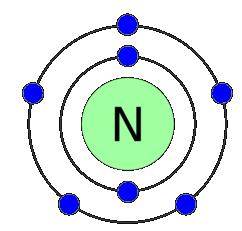| Liquid Nitrogen Safety |

|
|
1 - Liquid Nitrogen Safety
2 - Page 2 3 - Page 3 4 - Page 4 |

 |
Liquid nitrogen is inert, colorless, odorless, non-corrosive, nonflammable, and extremely cold.
Nitrogen in gas form is inert except when heated to very high temperatures where it combines with some of the more active metals, such as lithium and magnesium, to form nitrides. It will also combine with oxygen to form oxides of nitrogen and, when combined with hydrogen in the presence of catalysts, will form ammonia. Nitrogen makes up 78% of the atmosphere.
Nitrogen is inert and will not support combustion; however, it is not life supporting. Nitrogen can displace oxygen in the area, leading to asphyxiation. 1 cubic foot of liquid nitrogen will expand to 696 cubic feet of 100% gasesous nitrogen at 70 degree F.
![]() Watch liquid nitrogen evaporate and explands A balloon is filled with liquid nitrogen and tied.
Watch liquid nitrogen evaporate and explands A balloon is filled with liquid nitrogen and tied.
Physical Properties
- Molecular Weight: 28.01
- Boiling Point @ 1 atm: -320.5?F (-195.8?C, 77oK)
- Freezing Point @ 1 atm: -346.0?F (-210.0?C, 63oK)
- Critical Temperature: -232.5?F (-146.9?C)
- Critical Pressure: 492.3 psia (33.5 atm)
- Density, Liquid @ BP, 1 atm: 50.45 lb/scf
- Density, Gas @ 68?F (20?C), 1 atm: 0.0725 lb/scf
- Specific Gravity, Gas (air=1) @ 68?F (20?C), 1 atm: 0.967
- Specific Gravity, Liquid (water=1) @ 68?F (20?C), 1 atm: 0.808
- Specific Volume @ 68?F (20?C), 1 atm: 13.80 scf/lb
- Latent Heat of Vaporization: 2399 BTU/lb mole
- Expansion Ratio, Liquid to Gas, BP to 68?F (20?C): 1 to 694
Effects on your body
 |
The normal oxygen concentration in air is about 21% by volume. This provides a safe working environment with respect to the oxygen required to support life.
Although nitrogen is nontoxic and inert, it can act as a simple asphyxiant by displacing the oxygen in air to levels below that required to support life.
Inhalation of nitrogen in excessive amounts can cause dizziness, nausea, vomiting, loss of consciousness, and death. Death may result from errors in judgment, confusion, or loss of consciousness that prevents self-rescue. At low oxygen concentrations, unconsciousness and death may occur in seconds and without warning.
Personnel, including rescue workers, should not enter areas where the oxygen concentration is below 19.5%, unless provided with a self-contained breathing apparatus or air-line respirator.
| [1] 2 3 4 Next >> |

